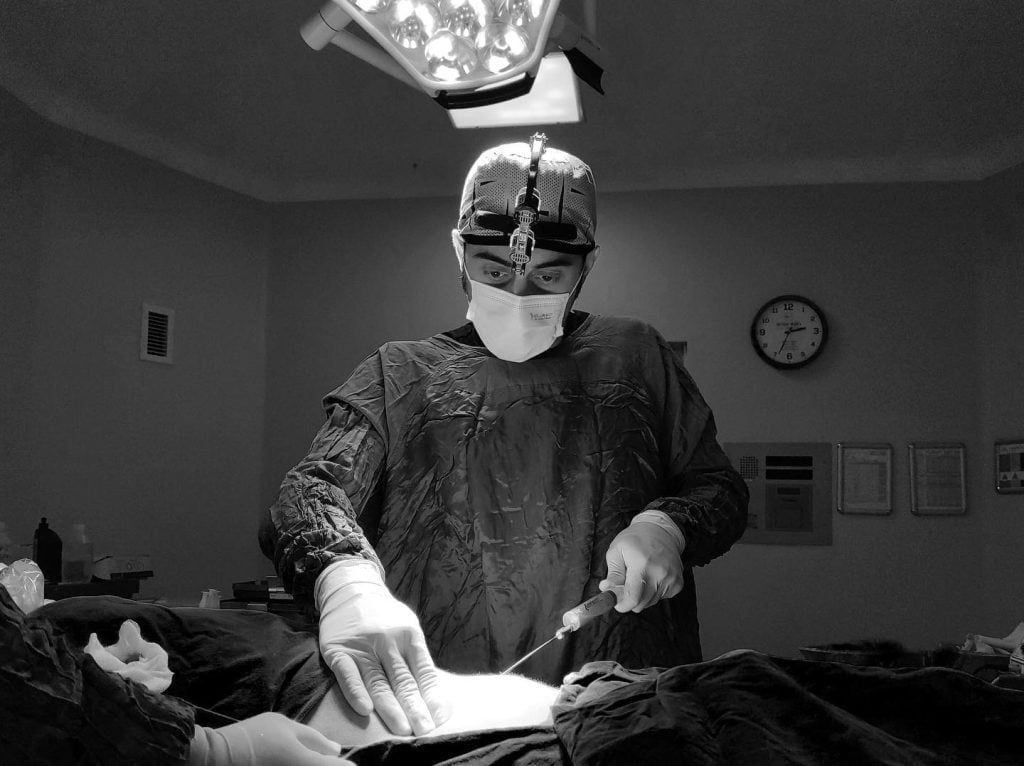Facial Feminization Surgery (FFS) is a significant step in aligning your appearance with your gender identity, and for many, it’s a deeply desired procedure. If you’re also undergoing Hormone Replacement Therapy (HRT), a common question emerges: When is the right time to consider FFS in relation to your hormone journey? Is there a magic number of months or years on hormones before you should start exploring surgical options?
The answer, like many aspects of gender transition, isn’t a strict one-size-fits-all timeframe. It’s a nuanced decision involving understanding how hormones feminize your face, allowing time for those changes to occur, and considering individual goals and surgeon recommendations. Let’s delve into the factors that will help you determine when you might be ready to think about FFS in relation to your HRT journey.

Table of Contents
Understanding the Facial Feminizing Effects of Hormone Therapy
Before diving into timelines, it’s essential to understand what facial changes you can expect from Hormone Replacement Therapy (HRT) with estrogen. HRT does bring about facial feminization, but it’s different from surgical FFS and has limitations.
Soft Tissue Changes vs. Bone Structure
HRT primarily affects the soft tissues of your face – fat, skin, and hair. It does not significantly alter the underlying bone structure, which is where FFS comes into play.
- Fat Redistribution: Estrogen causes fat to redistribute in the face, leading to:
- Fuller Cheeks: Fat migrates to the cheeks, creating a rounder, softer facial appearance.
- Softer Jawline: Fat deposition can subtly soften the jawline angle, although it won’t significantly reduce bone projection.
- Fuller Lips: Slightly increased fat in the lips can contribute to a more feminine pout.
- Skin Changes: Estrogen leads to changes in skin texture and composition:
- Softer Skin: Skin becomes softer, smoother, and often more elastic.
- Reduced Pore Size: Pores may appear smaller.
- Decreased Oiliness: Skin tends to become less oily.
- Hair Changes (Limited Facial Hair Reduction): While hormones dramatically impact body hair and scalp hair, the effect on existing facial hair is limited.
- Slower Growth: HRT can slow down facial hair growth and make it slightly finer, but it won’t eliminate existing terminal (dark, thick) facial hair. Electrolysis or laser hair removal are needed for significant facial hair reduction.
What HRT Cannot Achieve for Facial Feminization
It’s equally important to be realistic about the limitations of HRT regarding facial feminization. HRT cannot significantly change:
- Brow Bone Prominence: The bony ridge above your eyes (brow bone) remains largely unaffected by hormones. Brow bone reduction surgery is often necessary for feminization.
- Nose Shape and Size: HRT does not alter the shape or size of your nose. Rhinoplasty (nose surgery) is the surgical procedure for nasal feminization.
- Jawline and Chin Bone Structure: While fat redistribution can slightly soften the jawline, the underlying bone structure of the jaw and chin remains unchanged. Jaw contouring and genioplasty (chin surgery) address these bony features.
- Adam’s Apple (Laryngeal Prominence): HRT does not reduce the Adam’s apple. Tracheal shave surgery is required for its reduction.
Understanding these distinctions helps manage expectations about what HRT can achieve and where FFS becomes relevant. HRT sets a foundation, softening features, while FFS addresses the underlying bone structure for more profound feminization.
The Patience Factor: Why Time on Hormones Matters Before FFS
The most common recommendation from surgeons and medical professionals is to allow sufficient time on HRT before considering FFS. Why is patience so important?
Allowing HRT to Maximize Its Effects
Hormonal changes take time. Rushing into surgery before HRT has had sufficient time to work means you might not be seeing the full potential of feminization that hormones can provide.
- Soft Tissue Changes Evolve Over Time: Fat redistribution, skin changes, and subtle shifts in facial softness are gradual processes. It can take years for these changes to fully manifest.
- “Settling In” of Feminine Features: Facial features feminized by hormones continue to refine and “settle in” over an extended period. Operating too early might mean surgically altering features that would have feminized naturally with more time on HRT, potentially leading to less natural-looking results or unnecessary procedures.
Assessing Your Evolving Facial Dysphoria with Hormonal Changes
As hormones work their magic, your perception of your face and sources of dysphoria may shift.
- Dysphoria Reduction from HRT: For many, HRT significantly reduces facial dysphoria simply through the soft tissue feminization it provides. You might find that features that once caused distress become less bothersome as your face softens and feminizes under hormonal influence.
- Refining Your FFS Goals: As your face feminizes with HRT, you gain a clearer picture of what aspects still contribute to dysphoria. This allows you to refine your FFS goals, focusing surgical interventions on the remaining features that truly need addressing for your personal level of comfort and congruence. Operating prematurely might lead you to address features that would have become satisfactory with more time and hormonal changes, or you might miss focusing on features that become more prominent as others soften with HRT.
Surgeon Assessment and Planning Accuracy
Surgeons also prefer patients to be on hormones for a period of time before FFS consultations and surgery.
- Stable Feminine Baseline: Surgeons can more accurately assess your feminized facial features and plan surgical interventions when your face has undergone a significant period of hormonal feminization and reached a more stable, feminine baseline. This allows for more precise and targeted surgical planning for optimal results.
- Predicting Long-Term Outcomes: Operating after a period of hormonal feminization allows surgeons to better predict long-term surgical outcomes in conjunction with the ongoing effects of HRT, leading to more natural and harmonious final results.
General Timeline Recommendations: How Many Months or Years?
While there’s no magic number, general recommendations from surgeons and guidelines do exist.
Common Recommendation: 12-24 Months of HRT
A widely cited recommendation is to be on Hormone Replacement Therapy (HRT) for at least 12 to 24 months before seriously considering Facial Feminization Surgery (FFS). This timeframe provides a good balance between allowing significant hormonal changes to occur while still being within a reasonable timeframe for those eager to pursue surgery.
- One Year (12 Months) as a Minimum: Many surgeons suggest at least one year on HRT as a minimum baseline before even scheduling a consultation. This allows for noticeable initial soft tissue feminization to occur, but it’s often considered a starting point.
- Two Years (24 Months) for More Mature Feminization: Waiting closer to two years on HRT is often preferred by surgeons as it allows for more complete and mature soft tissue feminization and greater stability in facial features before surgical intervention. This longer timeframe can lead to more refined surgical planning and potentially better long-term outcomes.
- Individual Variability: It’s important to remember these are general guidelines. Individual rates of feminization on HRT vary. Some individuals may experience significant facial changes within a year, while others may take longer. Genetics, hormone levels, and individual response to HRT all play a role.
Going Beyond 24 Months: Continued HRT Effects and Personal Choice
Even after two years, HRT continues to have subtle but ongoing effects.
- Continued Soft Tissue Refinement: Feminization from HRT is not a static process. Soft tissue changes can continue to refine and mature for several years beyond the initial 1-2 year mark.
- Personal Comfort and Goals: Ultimately, the decision of when to pursue FFS is a personal one. Even after 24 months on hormones, some individuals may feel ready for surgery, while others may choose to wait longer, either to allow for further hormonal changes or for personal or financial reasons.
- Consultation and Surgeon’s Guidance: The best approach is to schedule FFS consultations with experienced surgeons after you’ve been on HRT for at least a year (and ideally closer to two). Surgeons can assess your individual facial feminization progress, discuss realistic expectations for both HRT and surgery, and provide tailored advice based on your specific needs and goals.

Factors Influencing Your Individual Timeline
Several factors influence when you might be ready to consider FFS and how long you should be on hormones beforehand.
Rate of Facial Feminization on HRT
As mentioned, individual responses to HRT vary vastly.
- Significant Early Feminization: Some individuals experience rapid and noticeable facial feminization within the first year of HRT. They might feel comfortable exploring FFS earlier, perhaps around the 12-18 month mark, if specific bony features remain a source of dysphoria.
- Slower or Less Pronounced Changes: Others may experience slower facial feminization or have less dramatic soft tissue changes from HRT. In these cases, waiting longer than 24 months might be beneficial to allow for maximum hormonal effects before considering surgery.
- “Diminishing Returns” Point: You and your surgeon can assess when you’ve reached a point of “diminishing returns” from HRT – when facial changes have plateaued and further waiting is unlikely to yield significant additional feminization. This is often a good time to consider surgical interventions for features that HRT won’t address.
Specific Sources of Facial Dysphoria
The types of facial features causing you dysphoria also influence timing.
- Bone Structure Dysphoria (Brow, Nose, Jaw): If your primary dysphoria stems from bony features that HRT won’t change (brow bone, nose, jawline), waiting longer on HRT might not significantly alter these specific sources of distress. Consulting with surgeons around the 12-18 month mark on HRT might be appropriate to discuss addressing these bony features surgically.
- Soft Tissue Dysphoria (Subtle Feminization Needed): If your dysphoria is less pronounced, and you primarily seek subtle overall facial feminization to complement the changes from HRT, waiting longer – beyond 24 months, even – might be a reasonable approach. HRT alone might be sufficient for your goals, or surgery, if desired, can be considered later to fine-tune feminization in a more mature facial structure.
Personal and Psychological Readiness
Emotional and psychological factors are paramount.
- Feeling “Stuck” or Impatient: For some, waiting excessively can lead to frustration or feelings of being “stuck” in their transition. If you’ve been on HRT for a year or more and feel emotionally ready and eager to move forward with FFS, consulting with surgeons to explore options is reasonable, even if it’s before the full 24-month mark.
- Financial and Logistical Factors: Practical aspects like finances, time off work, and travel arrangements can also influence your timeline. Once you feel emotionally and financially prepared, and have allowed a reasonable period for HRT to work, proceeding with FFS planning becomes a logical next step.
- Support System and Mental Health Stability: Ensure you have a solid support system in place and that your mental health is stable before undergoing FFS. Surgery is a significant undertaking, and emotional resilience is crucial for a positive experience.
The Consultation is Key: Talk to FFS Surgeons
Ultimately, the best way to determine your ideal timeline for FFS is to consult with experienced surgeons specializing in Facial Feminization Surgery.
Scheduling Consultations After at Least 12 Months of HRT
After being on HRT for at least a year, scheduling consultations with 2-3 reputable FFS surgeons is highly recommended.
- Surgeon Assessment: Surgeons can assess your facial feminization progress on HRT, evaluate your specific facial features, and discuss realistic surgical goals and expected outcomes in your individual case.
- Personalized Recommendations: Surgeons will provide personalized recommendations regarding the timing of FFS for you, based on their professional experience and your unique facial structure and desired level of feminization. They might suggest waiting longer on HRT or advise that you’re a good candidate for surgery now.
- Surgical Planning and Procedure Options: Consultations are also crucial for discussing potential FFS procedures that would best address your specific areas of dysphoria. Surgeons will outline different surgical approaches, explain risks and benefits, and help you create a surgical plan tailored to your needs.
Open Communication and Realistic Expectations
During consultations, have open and honest conversations with surgeons.
- Discuss Your HRT History: Provide a detailed history of your Hormone Replacement Therapy, including the type of hormones, dosage, and duration. Share any notable facial changes you’ve observed on HRT.
- Express Your Goals and Concerns: Clearly articulate your FFS goals, the facial features that cause you dysphoria, and any concerns or anxieties you have about surgery.
- Ask About Surgeon’s Philosophy on HRT Timing: Inquire about the surgeon’s general philosophy on the ideal timing of FFS in relation to HRT. Do they typically recommend waiting a specific duration? What factors do they consider when advising patients on timing?
- Manage Expectations: Be open to hearing realistic expectations from surgeons. They can help you understand what is surgically achievable, both in conjunction with and separate from the feminization you’ve already experienced from hormones.
Conclusion – Personalized Timing & Informed Decisions:
There’s no universal “magic number” for how long you should be on hormones before FFS. While 12-24 months is a common guideline, individual factors like your rate of facial feminization on HRT, specific sources of dysphoria, and personal readiness all play crucial roles. Patience is generally beneficial to allow hormones to work their best. However, the most informed decision comes from scheduling consultations with experienced FFS surgeons after at least a year on HRT. Surgeon assessments, open communication, and realistic expectations will guide you to determine your optimal timeline for pursuing FFS and achieving your desired level of facial congruence. The journey is personal, and informed decisions lead to the most satisfying outcomes.
Ready to discuss your FFS timing with an expert? Schedule a consultation with a specialist Facial Feminization Surgeon today to get personalized advice tailored to your unique transition journey.

Visit Dr.MFO Instagram profile to see real patient transformations! Get a glimpse of the incredible results achieved through facial feminization surgery and other procedures. The profile showcases before-and-after photos that highlight Dr. MFO’s expertise and artistic vision in creating natural-looking, beautiful outcomes.
Ready to take the next step in your journey? Schedule a free consultation with Dr. MFO ( Best Facial Feminization Surgeon for You) today. During the consultation, you can discuss your goals, ask any questions you may have, and learn more about how Dr. MFO can help you achieve your desired look. Don’t hesitate to take advantage of this free opportunity to explore your options and see if Dr. MFO is the right fit for you.









